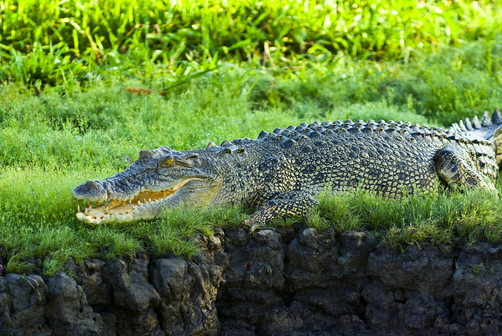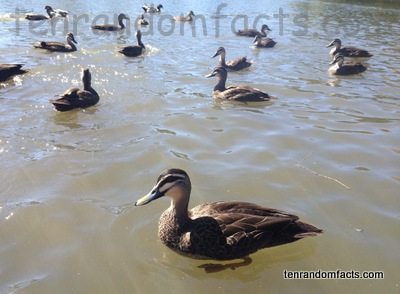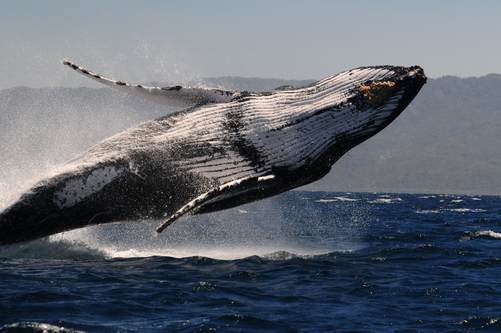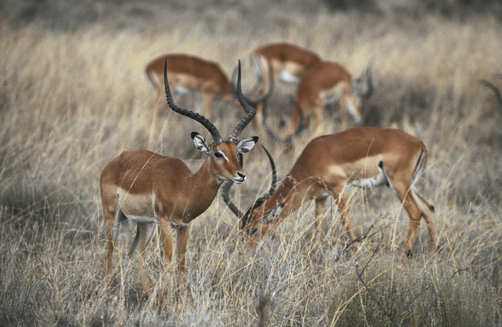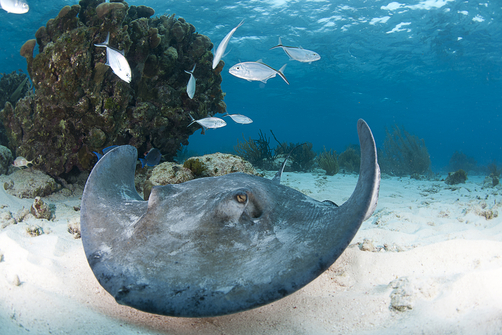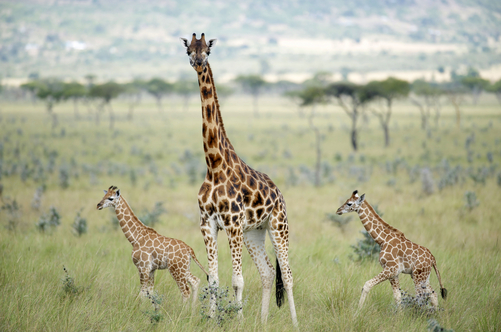
Very, very tall giraffe necks.
- Giraffes are mammals native to Africa and are the tallest non-extinct, land dwelling animal.
- Giraffes have large eyes, and almost 360° vision, very long legs and necks with two horn-like bumps on its head, known as ‘ossicones’.
- The scientific name of giraffes is Giraffa vamelopardalis and they come from the small family, Giraffidae, the family of some long necked mammals.
- Giraffes grow to five to six metres (16 to 20 feet) in height and weigh 830 to 1600 kilograms (1800 to 3500 pounds), depending on the gender, and can run up to speeds of 56 kilometres/hour (35 miles/hour) .
- Giraffes have dark patches of colour on their bodies, which can be chestnut, brown, orange or almost black, separated by white or cream, and no two have the same coat pattern.
Rothschild’s Giraffe
Image courtesy of National Geographic
- The giraffe species contains nine subspecies, recognised by the pattern on their coats, with some endangered, such as the Nubian giraffe that has an estimated population of 250.
- Giraffes generally do not make noise but if they do, they make snoring, mooing, hissing and moaning type sounds.
- Giraffes can live up to 25 years of age in the wild, although only one quarter to a half of the young grows to be an adult.
- Giraffes are common tick hosts, and birds, usually billed ox-peckers, remove the ticks.
- Giraffes have approximately 53 cm (21 inch) long tongues, are herbivorous and can eat 34 kg (75 lb) of plant material, generally leaves from trees, in one day.
Bibliography:
Giraffe, 2013, National Geographic, <http://animals.nationalgeographic.com.au/animals/mammals/giraffe/>
Giraffe, 2013, Wikipedia, <http://en.wikipedia.org/wiki/Giraffe>






